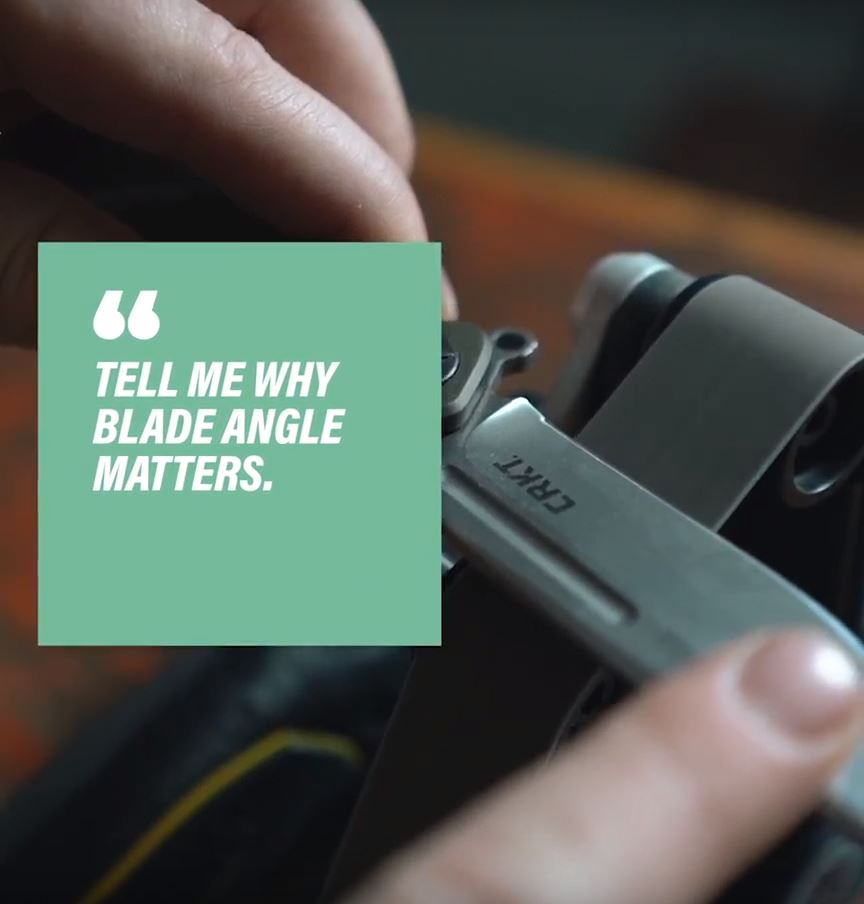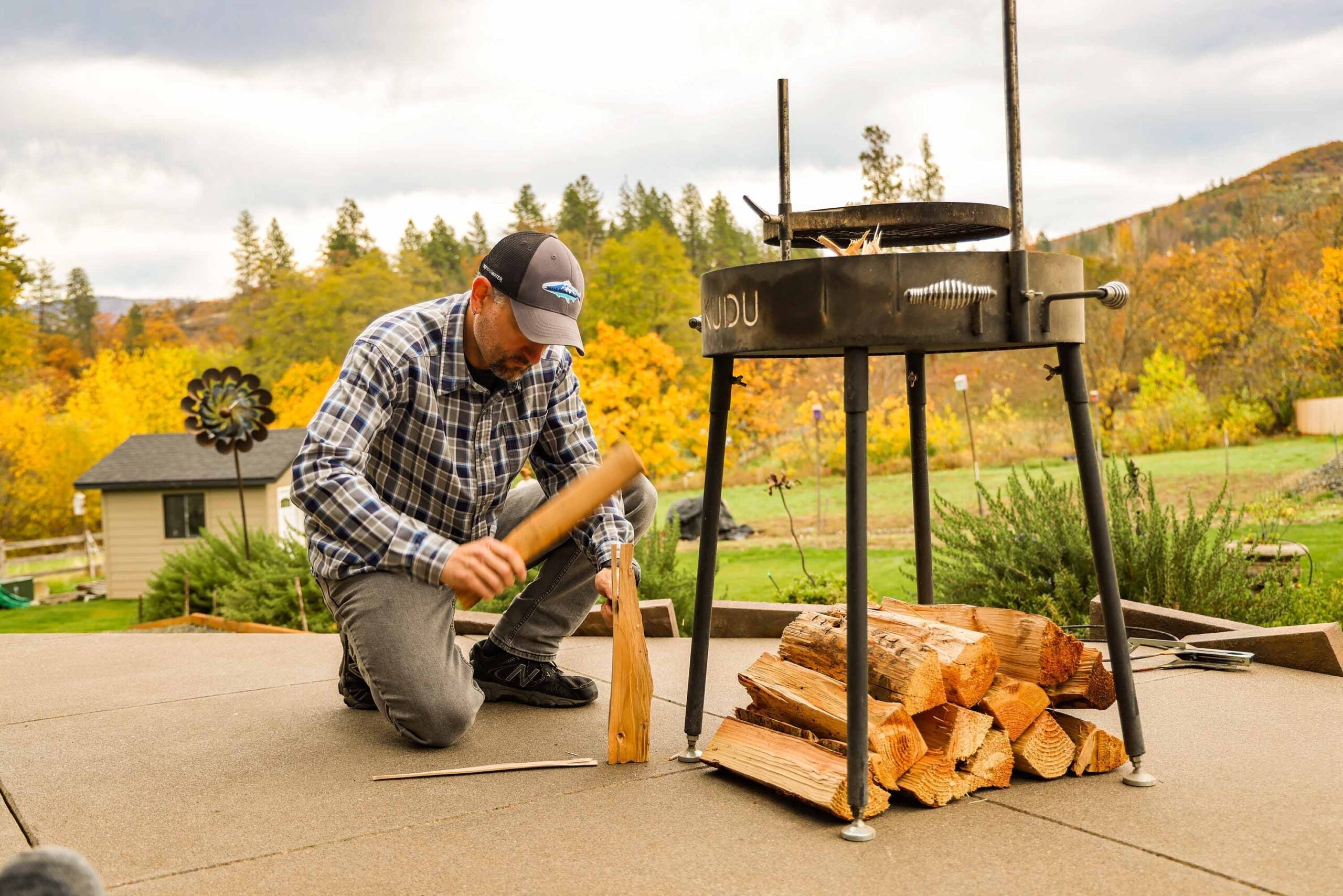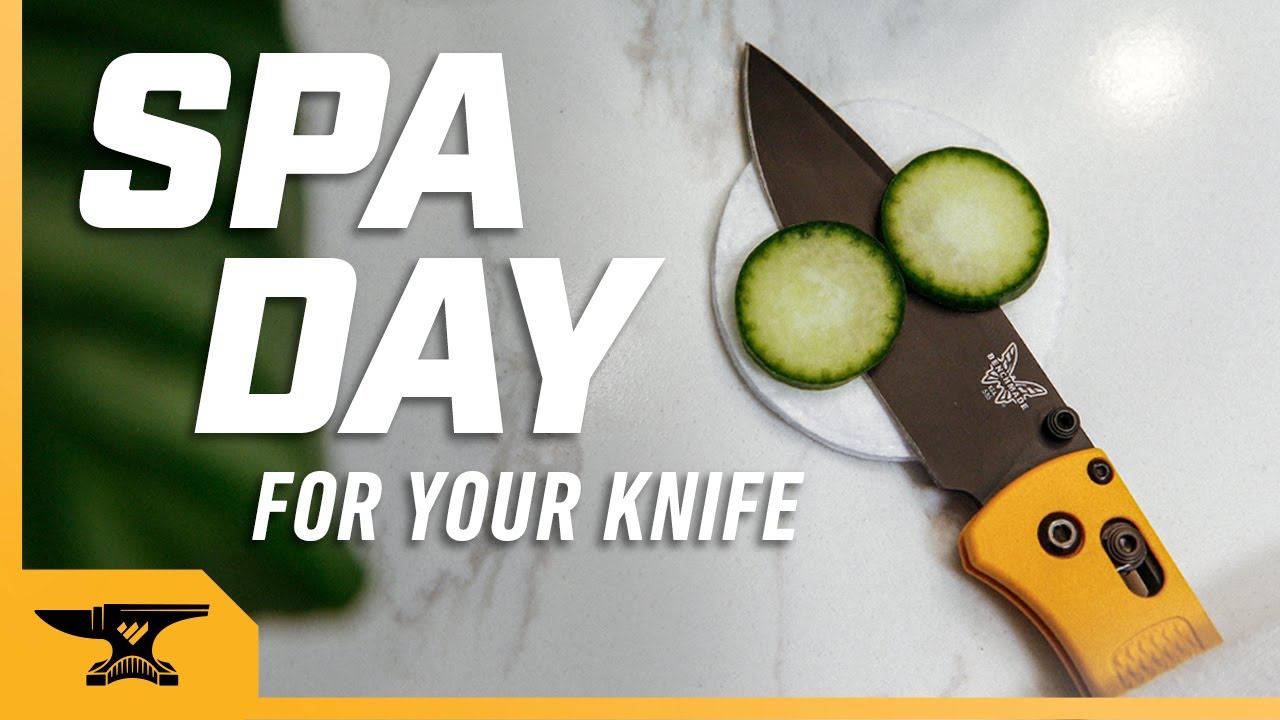A sharp knife is important. Every cutting task is made easier, is faster, and is argued to be safer when your knife is sharp. Here are the basics to knife sharpening to help prepare you for sharp. #SharpMatters.

When To Sharpen Your Blade
First things first. Deciphering the condition of your blades edge will help you decide how much sharpening you actually need to get back to sharp. Some ways to test the edge:
- Place the blade lightly on your thumbs finger nail and glide away from you. If the blade slides on the nail without catching, odds are your edge is dull.
- The paper cutting test, which requires holding paper out in front of you, angling the blade just slightly, and cutting downward away from your hand. If the knife grabs at the paper and doesn't slice, you need a sharper edge.
- Most preferred is to try a test cut on material like veggies, rope, or cardboard . If you have to saw to get through the material or use force, your knife is dull.
Blade Angle
The angle of a blade will vary, depending on the style and use of the knife or tool. These angels typically vary between 10-35 degrees. A 10 degree angle is a very fine edge (think of a straight razor). A much wider angle, like 35 degrees, is what you will find on a thick blade, like a machete. The wider the angle the more durability the edge has, which means it can withstand tougher cutting material and is a great workhorse. The finer the angle, the more refined and precise the cut is going to create. Both angles will withstand and uphold sharp when using them for their proper cutting purposes.
Manufacturers will grind the recommended angle on a knife or tool when it is first made. Looking at the recommendations of the manufacturer is an easy place to start when deciding what angle you want on your knife. Degrees can vary slightly and you can adjust the angle on your blade easily with Work Sharp products, like the Ken Onion Edition Knife & Tool Sharpener, which adjusts in 1 degree increments.
A good rule of thumb to go by is 17-20 degrees for Kitchen knives and 22-35 degrees for outdoor knives. Outdoor tools will land more in the higher range of 30-40 degrees.
Knife Steel
Steels vary from very soft to much harder and brittle. Understanding steel will benefit you as you sharpen. Check out this article from Gear Junkie for an easy-to-follow breakdown of steel types and what to expect when sharpening them.

Blade Shape
Depending on the shape of your blade will alter the way you sharpen. If you have a typical straight edge (think of a drop point), you will follow the curve of the blade as you sharpen. A blade like a tanto edge can appear to be a challenge to sharpen when actually, it is very easy! Simply treat both edges of a tanto blade as their own. Sharpen the longer edge up to the first point, and then maneuver your blade to only sharpen the shorter top edge second, again ending at the point where both edges intersect. For an edge with serrations, you will only sharpen the side that is flat without the bevel. This will knock any material that has rolled over back into place. If you have small ceramic rods, like the one of the Work Sharp Guided Field Sharpener, or the Combo Knife Sharpener, you can easily sharpen in between the notches of a serrated blade as well.
What Abrasives Should I Use?
Assess the condition of your knife. If the edge is inconsistent or has any chips or dings, you will want to reshape the edge by starting with a coarse abrasive, like the P120 belt on the Original Knife & Tool Sharpener. Another reason to use a coarser abrasive to start is if you are sharpening a harder steel. If you are refreshing an edge or touching up an already sharp edge, you will reach for a medium or fine abrasive.
For more details and to see how to use Work Sharp Products, watch the Gear Junkie video below.






